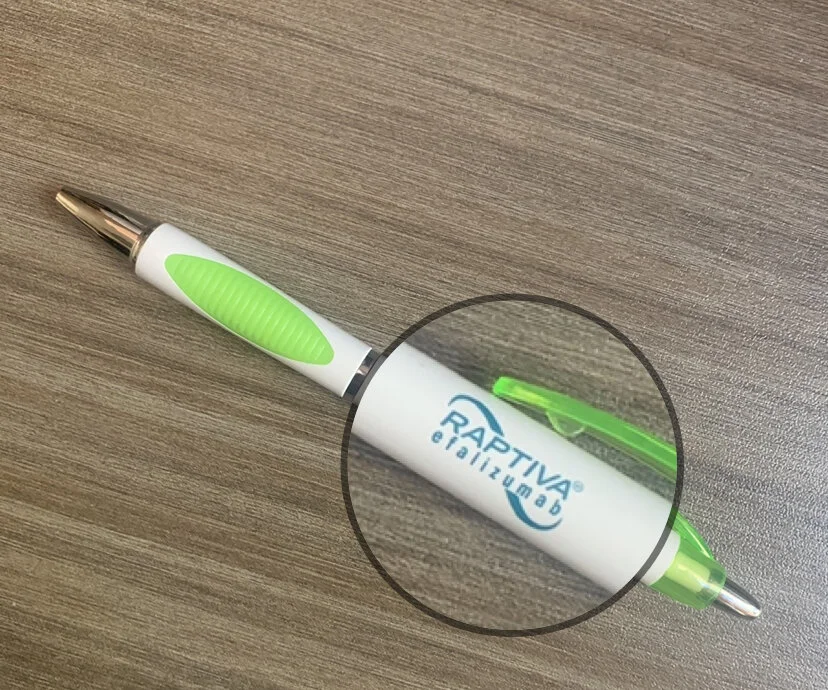Pharmacovigilance: Ensuring Drug Safety for All
FDA Approval is Just “Step 1” in the Life of Drug or Treatment
Pharmacovigilance is a term that refers to all the steps that go into detecting, assessing, understanding, and preventing adverse effects from drugs.
Raptiva was FDA approved in 2003 only to be removed from the market 6 years later.
I’ve saved this pen with the logo of the drug Efalizumab (Raptiva) for more than a decade. Efalizumab was approved for the skin disease psoriasis in 2003 - 6 years later it was removed from the market.
For me, the pen is a reminder of the importance of pharmacovigilance. It’s a reminder that FDA approval does not mean a drug is completely safe - it just means it is reasonably safe based on the data that companies submit after completing necessary clinical trials. If a company studies the benefits of a certain drug in 2000 patients and submits data on outcomes of those 2000 patients to the FDA, the FDA might approve the drug. Whether the drug is going to have any unusual side effects or even cause death might not be completely known until treatments start happening out in offices, clinics and hospitals in the “real world.”
The FDA approval of Raptiva was based on initial studies in approximately 2,700 patients - most received the drug for only a few months.
Fast forward 6 years to 2009, after over 46,000 patients had received efalizumab. The world came to learn that 3-4 patients developed a rare and serious disease known as progressive multifocal leukoencephalopathy (PML) after using Efalizumab. 3 died. The only way that these side effects came to be realized was through pharmacovigilance after the drug was released: doctors saw the side effect and reported it regardless of whether they felt it was truly linked or not. Over time, it became clear it was linked.
FDA approval is only step 1 for a drug. When a drug/treatment is released into the world after FDA approval, we do not know all of the drug’s side effects. Ongoing monitoring of safety is needed for all drugs. If a drug causes problems 10 years later but studies that were done lasted only 4 months, we are not going to learn about these side effects for many years. If a drug causes severe harm or death in 1 in 100,000 patients, these concerning side effects might not be uncovered in clinical trials that involve only a few thousand patients.
My pen is a precious reminder of the importance of pharmacovigilance. Every single year the FDA receives 350,000 to 400,000 reports about some side effect in some drug. Companies are now required to conduct good follow up studies and perform careful monitoring after a drug is released onto the market and can face penalties if such studies are not done.
This article was written by Dr. Jeff Donovan, a Canadian and US board certified dermatologist specializing exclusively in hair loss.

